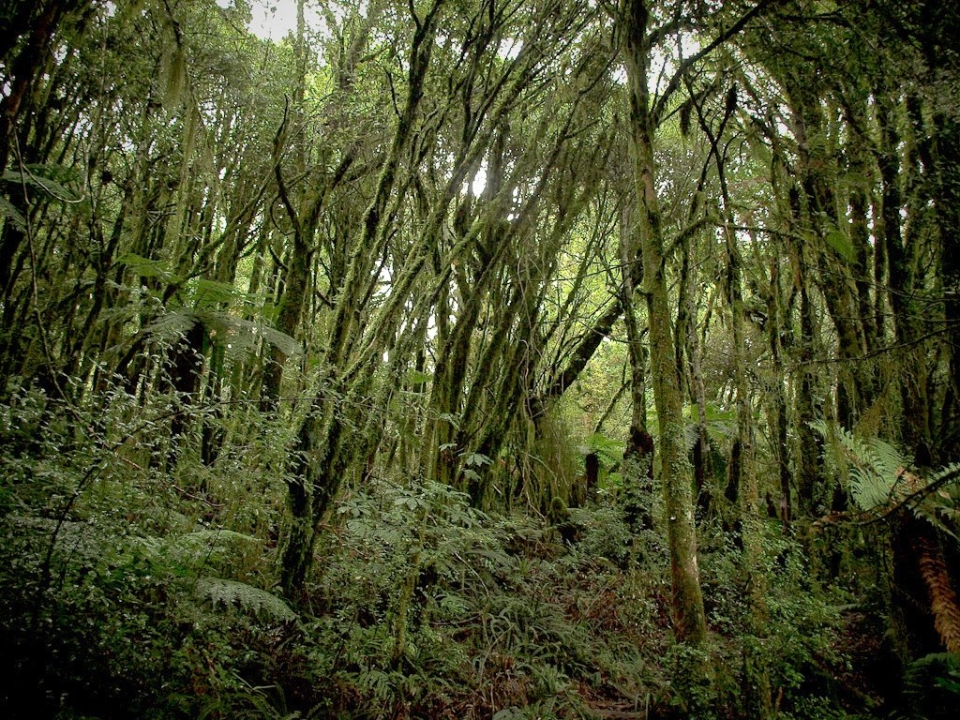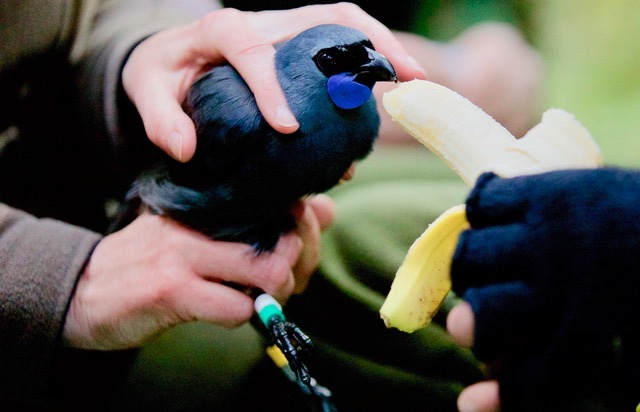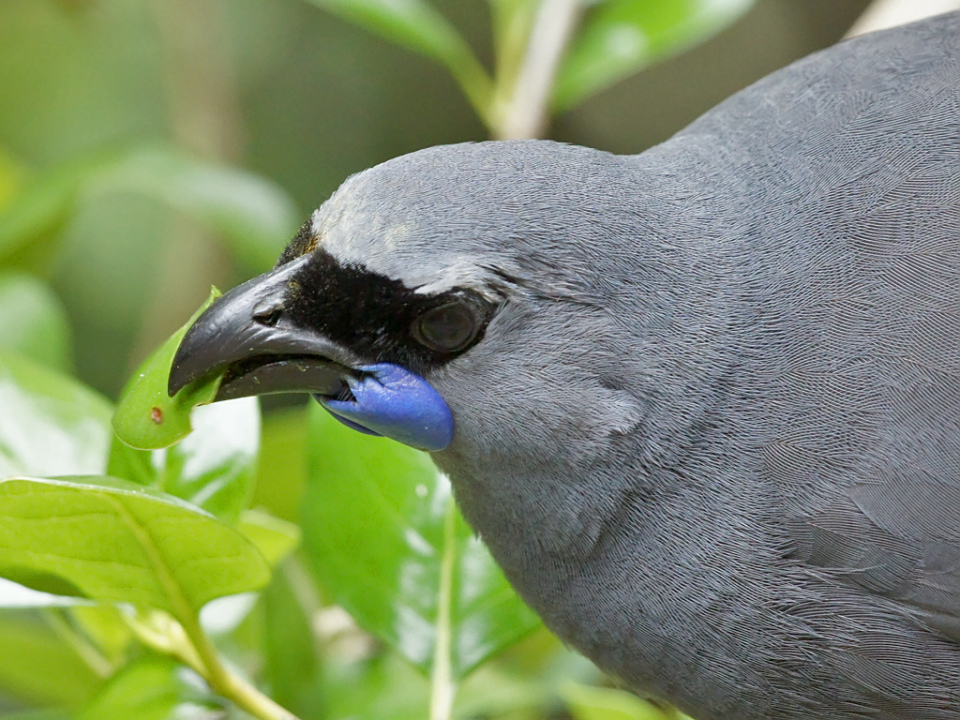Loss of habitat
As forests have been cut down and cleared the numbers of kōkako have fallen. According to Māori the kōkako was once common across North Island forests and fossil remains also show this.
Three-quarters of native forests have now gone, causing the loss of many native birds. Only small pockets of forest now remain and introduced mammals, such as ship rats and possums are common.
Where can you see kōkako?
With the loss of forest habitat and the introduction of predators North Island kōkako are now mainly found on offshore predator free islands and in:
- Northern Urewera
- Bay of Plenty
- Waikato
- The King Country
- Tiritiri Matangi Island
- A few also survive in Northland’s kauri forests.
What types of forest do kōkako live in?
Kōkako live in tall native forest with a variety of different broadleaf trees, usually with a canopy of tawa. Kōkako feed on the tawa berries and help spread its seeds.
Population
The North Island kōkako population has grown from about 330 pairs in 1999 to around 1595 in 2017 due to pest control at key sites, and translocating birds.
Kōkako defend terrritories year-round by singing. These areas can range from 4-25 hectares so kōkako are not found together in large groups.
The oldest known-age of a kōkako is eleven years, but they may live for twenty years or more.
South Island kōkako
South Island kōkako were slightly smaller and darker than the North Island birds, with orange rather than blue facial wattles. In the early 1800s, they were found in beech forests and low scrub above the tree line on both sides of the Southern Alps from north-west Nelson south to Fiordland. They were also found in forest on Stewart Island, plus some forested areas of Otago and Southland.
South Island kōkako numbers dropped quickly after the introduction of: 
- cats
- ship rats
- possums
- stoats
Kōkako were very rare by the late 1800s. The range of the South Island kōkako shrank to Fiordland and Stewart Island, with the last accepted sighting at Mt Aspiring National Park in 1967.
The Department of Conservation declared the South Island kōkako extinct in 2008. In 2013 this status was changed to 'data deficient', meaning there is not enough information to know for sure whether this bird still exists. The last accepted sighting was in Reefton on the West Coast of the South Island in 2007.
Complete the kōkako habitat quiz >







